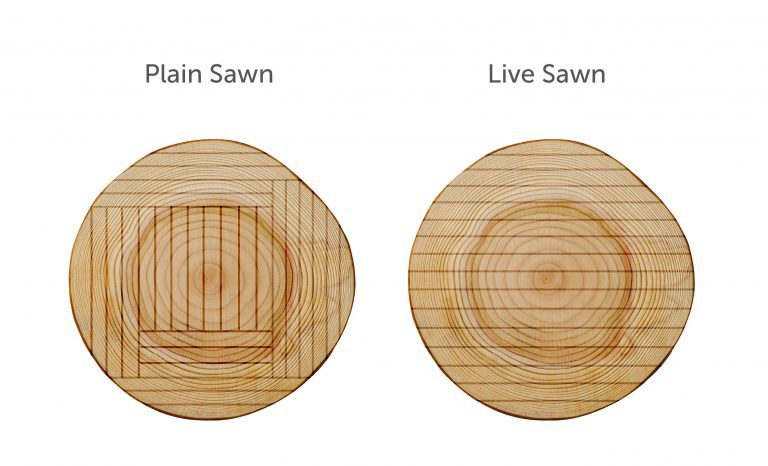Plain Sawn vs. European Live Sawn Lumber

To review, plain sawn is the most common North American sawing method for flooring. A board is cut, then turned 90 degrees before being cut again. This method minimizes waste and is fast when compared to other methods. It produces wood that shows the recognizable cathedral grain, and usually, any boards that qualify as rift and quartered are culled from the mix and sold at a premium cost.
With the shortage of white oak as well as a rising trend of wide plank flooring, you’ve probably started to hear more about European and domestic live sawn flooring options. In Europe, live sawn is the oldest and most common method of cutting lumber and one that utilizes every part of the log. Each cut is made straight through the heartwood and is parallel to the next. This technique produces a mixture of plain, quarter, and rift sawn cuts, all in one wide plank of wood! Some sawmills produce planks up to 12” wide.
Live sawn boards (sometimes referred to as European or French cut) give hardwood floors a unique appearance because all parts of the wood are captured in the cut. Many boards will display cathedral plain sawn grain in the center of the board and rift/quartered characteristics toward the outer edges. Live sawn flooring is typically produced in a “natural” grade (combination of all grades) which allows for some knots and natural wood characteristics and color variations. Because at least a third of the cut is quarter sawn, live sawn planks are also highly stable. Floors made of live sawn lumber are regarded as both cost-effective and environmentally friendly.
Although this method of cutting originated in Europe, it has now been adopted here in the U.S. as many high-end clients and designers are beginning to value live sawn wood for its sophisticated visual appeal and other benefits. With its unique beauty, width and stability, it’s no wonder that the live sawn cut is gaining new fans.
